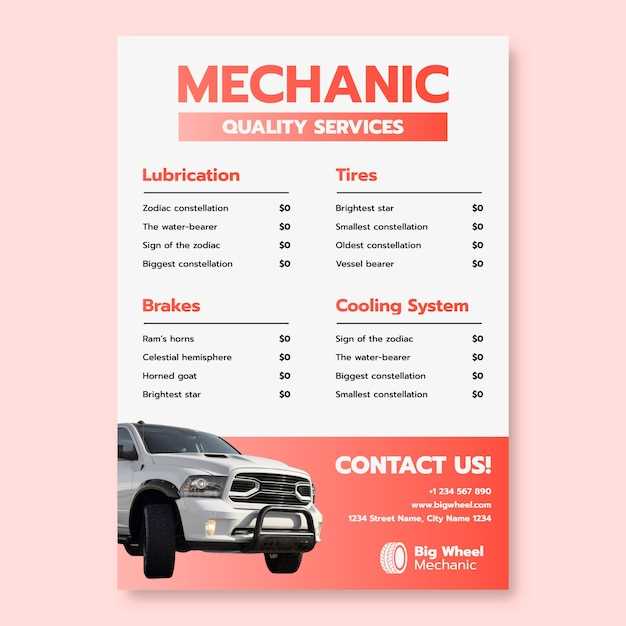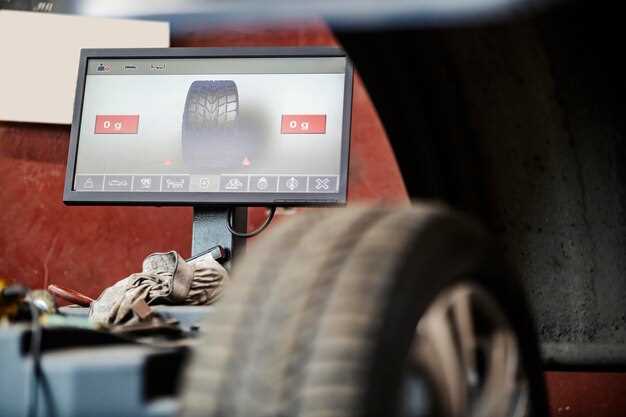Tire Rotation Schedule for Audi Cars

Tire maintenance is a crucial aspect of vehicle ownership that significantly affects performance, safety, and longevity. For Audi owners, adhering to a timely tire rotation schedule is essential to ensure even wear on all tires and to maintain the vehicle’s handling capabilities. Regular rotation not only maximizes the lifespan of your tires but also enhances overall driving experience.
The unique design and engineering of Audi vehicles necessitate a specific approach to tire maintenance. Rotating your tires at regular intervals can help mitigate uneven wear caused by factors such as weight distribution, driving style, and road conditions. This proactive measure ultimately contributes to a more balanced ride and improved traction, particularly in challenging weather conditions.
It’s advisable for Audi owners to consult their owner’s manual for a recommended tire rotation schedule, typically ranging from every 5,000 to 10,000 miles. By following this schedule, you can effectively manage tire wear and maintain optimal performance. Keeping track of your rotation history will ensure your tires function at their best, allowing you to enjoy the true driving pleasure Audi is known for.
Understanding Audi’s Recommended Tire Rotation Intervals
Audi vehicles are engineered for optimal performance, which includes maintaining proper tire health. Regular tire rotation is essential for ensuring even wear across all tires, maximizing their lifespan, and maintaining driving safety. Audi recommends a tire rotation interval of every 5,000 to 7,500 miles, although this can vary based on driving habits and conditions.
Uneven tire wear can lead to reduced traction, compromised handling, and increased noise. To prevent these issues, it’s advisable to follow Audi’s service schedule. The rotation process involves switching tires from one position to another, which helps distribute wear evenly. For instance, front tires often wear faster than rear tires, especially in front-wheel-drive models, making rotation crucial for maintaining balanced performance.
Owners should also monitor tire pressure and alignment, as these factors can impact wear rates. Regularly rotating tires as per Audi’s recommendations not only enhances the driving experience but also contributes to overall vehicle safety and longevity of tire performance. Always consult your owner’s manual for specific guidelines that apply to your model.
Signs Your Audi Tires Need Rotation
Regular tire rotation is crucial for maintaining optimal performance and longevity of your Audi’s tires. Here are some key signs that indicate it may be time for a tire rotation:
| Sign | Description |
|---|---|
| Uneven Wear | If you notice that the tread on your tires is wearing unevenly, with one side significantly more worn than the other, it’s a clear indication that rotation is needed to ensure balanced wear. |
| Vibration While Driving | Experiencing unusual vibrations or noise while driving can be a sign of improper alignment and uneven tire wear, suggesting that a rotation could help maintain a smoother ride. |
| Decreased Fuel Efficiency | When your tires are not evenly worn, it can lead to increased rolling resistance, which may result in decreased fuel efficiency. Rotating your tires can help optimize performance. |
| Visual Inspection | A regular visual inspection can reveal signs of wear or damage. Look for bald patches or cracks, which could indicate that a rotation is necessary to extend tire life. |
| Time Interval | Following the manufacturer’s recommendations, typically every 5,000 to 7,500 miles, is a good rule of thumb. If it’s been a while since your last rotation, it’s time to schedule one. |
By paying attention to these signs, you can ensure that your Audi’s tires remain in excellent condition, contributing to overall performance and safety on the road. Regular rotations help promote even tire wear, prolonging the life of your tires and providing a smoother driving experience.
How Tire Rotation Affects Wear Patterns on Audi Tires

Tire rotation is a critical maintenance practice that influences the longevity and performance of Audi tires. Understanding how rotation affects wear patterns can enhance tire life and ensure optimal driving conditions.
Uneven tire wear is a common issue in vehicles, including Audis, due to variations in weight distribution, driving habits, and road conditions. Regular rotation helps mitigate these effects by redistributing the wear across all tires.
- Front vs. Rear Tires: The front tires often experience more wear due to steering, braking, and weight transfer during acceleration. Rotating them with rear tires allows for balanced wear.
- Drive vs. Non-Drive Tires: In all-wheel-drive Audi models, the unique wear patterns can develop faster on drive tires. Regular rotation aligns wear rates, prolonging tire life.
- Tread Depth Maintenance: Consistent rotation aids in maintaining even tread depth across all tires, which is essential for effective traction and handling.
To understand tire wear patterns better, consider the following common effects:
- Cupping: Irregular wear that may produce a bouncing effect while driving, often exacerbated by lack of rotation.
- Feathering: Flat spots on the tire tread that can lead to noise and vibration, directly related to imbalanced wear patterns.
- Edge Wear: Often a sign of improper inflation or alignment, which can be mitigated with frequent rotation schedules.
Therefore, adhering to an Audi tire rotation schedule not only evens out wear but also enhances overall vehicle performance, safety, and comfort on the road. A strategic approach to tire maintenance is essential for optimal Audi performance.
The Impact of Tire Rotation on Audi Handling and Safety

Tire rotation is a critical maintenance practice that significantly influences the handling and safety of your Audi. Regularly rotating tires helps to promote even wear across all tires, which is essential for maintaining optimal performance and stability on the road.
Uneven wear can lead to compromised traction, affecting the vehicle’s grip during acceleration, braking, and cornering. By adhering to the recommended tire rotation schedule, you enhance your Audi’s ability to respond predictably to driver inputs, ensuring maximum control in various driving conditions.
Furthermore, consistent rotation can extend the lifespan of your tires, helping you avoid premature replacements that could impact your vehicle’s handling characteristics. A well-maintained set of tires will not only improve your Audi’s performance but also contribute to a safer driving experience by reducing the likelihood of tire blowouts or skids.
In summary, the importance of tire rotation cannot be overstated. Prioritizing this maintenance task will help ensure that your Audi remains responsive, safe, and optimized for performance while on the road.
DIY Tire Rotation: Step-by-Step Guide for Audi Owners
Rotating your tires is essential for maintaining optimal performance and extending the lifespan of your Audi’s tires. Uneven wear can lead to compromised handling, decreased fuel efficiency, and a less comfortable ride. Here’s a straightforward guide to help you perform a tire rotation yourself.
Before starting, ensure you have the following tools:
- Jack and jack stands
- Tire iron or lug wrench
- Torque wrench (for proper tightening)
- Wheel chocks (to prevent rolling)
-
Park Your Audi on a Level Surface
Make sure the vehicle is on a flat area and engage the parking brake. Place wheel chocks behind the rear wheels for added safety.
-
Loosen Lug Nuts
Using the tire iron, slightly loosen the lug nuts on all four tires but do not remove them completely. This will make the process easier once the vehicle is lifted.
-
Lift the Vehicle
Use the jack to lift the front or rear of the vehicle, depending on which tires you are rotating. Always place the jack stands under the vehicle to support it securely.
-
Remove Tires
Once lifted, remove the lug nuts completely and take off the tires. Be sure to keep the lug nuts in a safe place.
-
Rotate Tires
Depending on whether your Audi is front-wheel drive, rear-wheel drive, or all-wheel drive, the rotation pattern will vary:
- Front-Wheel Drive: Move front tires to the rear and cross the rear tires to the front.
- Rear-Wheel Drive: Move rear tires to the front and cross the front tires to the rear.
- All-Wheel Drive: Rotate tires in a rearward pattern; front tires move to the back and back tires move to the front (crossed).
-
Re-mount Tires
Place each tire back onto the correct hub. Hand-tighten the lug nuts onto the studs before lowering the vehicle.
-
Lower the Vehicle
Carefully lower your Audi back to the ground using the jack and remove the jack stands.
-
Tighten Lug Nuts
Using a torque wrench, tighten the lug nuts in a star pattern to ensure even pressure. Refer to your Audi’s owner manual for the correct torque specifications.
After completing these steps, it’s a good idea to check the tire pressure and inspect for any signs of uneven wear or damage. Regular tire rotation will help you maintain optimal performance and prolong the life of your tires.
Professional Tire Rotation Services: What to Expect
When you opt for professional tire rotation services, you can expect a thorough assessment of your tires’ condition and wear patterns. During the appointment, trained technicians will inspect each tire for signs of uneven wear, which can indicate alignment issues, improper inflation, or other mechanical problems. This inspection is crucial as it allows for timely intervention, potentially extending the lifespan of your tires and enhancing overall vehicle performance.
The rotation process involves moving the tires from one position to another, following a specific pattern tailored to your vehicle type and driving habits. Typically, tires are rotated every 5,000 to 7,500 miles to ensure even wear and optimal performance. The technicians will utilize specialized tools to safely lift your vehicle and securely reposition the tires. This not only helps in balancing the wear across all tires but also improves traction and handling as the vehicle’s weight distribution changes over time.
After the rotation, professionals will check the tire pressure and make necessary adjustments. Correct tire pressure is essential for safe handling and fuel efficiency. Some services may also include a complimentary inspection of the brakes and suspension components, providing additional peace of mind.
Overall, choosing professional tire rotation services means investing in your vehicle’s longevity and performance. It ensures that all tires wear evenly, which can substantially enhance your driving experience, reduce the risk of tire blowouts, and maximize fuel efficiency. By understanding what to expect from these services, you can make informed decisions that benefit your Audi and its performance on the road.




